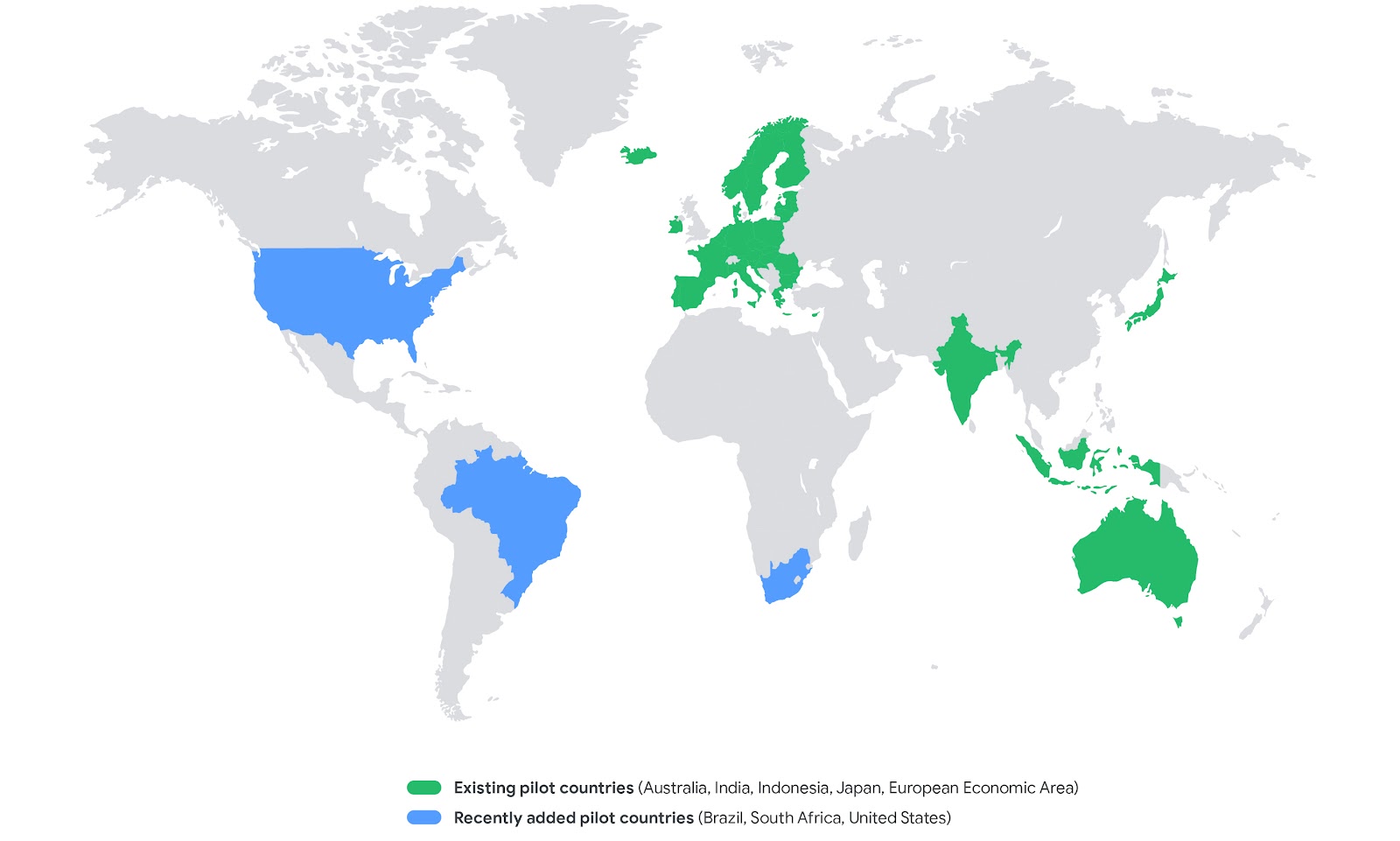In water-scarce regions like California, every last drop counts. Yet millions of gallons of water are lost every year to a common, yet easily preventable, cause of water waste: leaky toilets.
That's why we recently co-funded a pilot project to install water-saving technology in three multi-family buildings in Los Angeles. The tech takes aim at common leaks, like toilets that keep running water when not in use, which can add up over time. The pilot is on track to save 6.4 million gallons of water a year in the L.A. watershed where we operate, supporting our commitment to replenish 120% of the water we consume, on average, across our offices and data centers by 2030.
The pilot came together with partners from the California Water Action Collaborative (CWAC), a water stewardship network of over 25 organizations — including private companies like Google alongside environmental NGOs and nonprofits — that are committed to improving water security across the state.
Here's a look at how this project is saving water, money and energy, and at the potential for collective action models to make meaningful progress on rising water challenges.
Saving water, money and energy
The Los Angeles Department of Water and Power estimates that the average household loses up to 10,000 gallons of water every year to leaky toilets that go unnoticed. The good news is that while leaky toilets can be hard to detect, they’re easy to fix.
For the pilot project, CWAC members Pacific Institute and Bonneville Environmental Foundation tackled this challenge in three low-income multi-family housing buildings operated by nonprofit organizations, working alongside the Metropolitan Water District of Southern California and other local water utilities. Toilets in these buildings were equipped with small, low-cost, low-power sensors developed by Sensor Industries. When a toilet leaks, the sensors alert building management in real time that a toilet needs to be repaired. The fix is usually as simple as readjusting or replacing the toilet flapper.
This simple intervention resulted in serious savings of water, money and energy, according to estimates from the nonprofit Pacific Institute:
- Water: The pilots are reducing building water use by an estimated 15% to 25%. The expected savings of 6.4 million gallons of water per year is equivalent to the total annual water use of about 40 single-family homes. Those savings extend to other customers who get their water from the same public utility, reducing water demand — and improving water reliability and affordability — across the system.
- Cost: The water savings translate into cost savings on water and wastewater bills of the same 15% to 25%, amounting to tens of thousands of dollars a year. The nonprofit building operators who pay the water bills could use these savings to make building improvements, in effect passing the savings along to residents.
- Energy: Southern California imports much of its water from hundreds of miles away, and it takes a lot of energy to pump this water over the mountains surrounding the L.A. Basin and treat it for household use. By reducing the demand for that water, the project cuts back on the energy and associated greenhouse gas emissions embedded in the water system.
Pacific Institute points to several other advantages of this approach. Residents don’t have to do anything — the non-invasive system detects problems and notifies the building. Facility managers can see the likely reason for the leak (such as a stuck flapper), which helps them fix it faster. The nonprofit building operators can focus on more urgent issues and reduce time spent tracking down leaks.
Bringing the solution to more cities
Taking this pilot to other places has always been a goal, and that expansion effort is now underway. We’re funding work to bring this solution to a 225-unit building in San Francisco that shares a watershed with our local offices. Here we expect to save a little over 1 million gallons of water a year, based on the savings found in L.A.
In New York City, we’re exploring this approach in a building a few miles from our main local campus, and here too we expect to save roughly 1 million gallons of water a year. While this region is not currently in a drought, we expect the system to save significant amounts of energy, as New York City imports its water from far away. Additionally, this project can help reduce pressure on New York’s combined waste- and stormwater system, which can overflow into clean waterways during heavy storms.
In the face of difficult decisions around water resources and scarcity, it’s not easy to find meaningful wins that everyone can get behind. The pilots represent a solution that local utilities anywhere can adopt with the right partners.
Looking ahead, we’ll continue to support collective action around watershed health in the communities where we operate. A healthy, resilient water system takes all of us.
.png) Building on Android’s long history of continuously evolving to provide users and developers more flexibility and choice, we announced earlier this year that we would begin exploring expanded billing options on Google Play through our user choice billing pilot. At the heart of this pilot is our belief that the best way to offer alternative billing for in-app purchases is to put the choice in the hands of users.
Building on Android’s long history of continuously evolving to provide users and developers more flexibility and choice, we announced earlier this year that we would begin exploring expanded billing options on Google Play through our user choice billing pilot. At the heart of this pilot is our belief that the best way to offer alternative billing for in-app purchases is to put the choice in the hands of users. 


 We are thrilled to announce the 2023
We are thrilled to announce the 2023 



